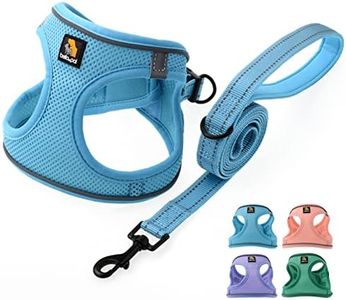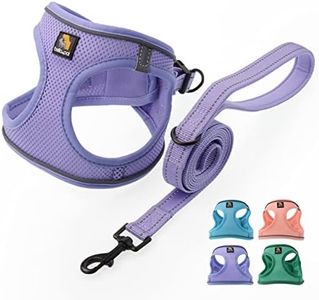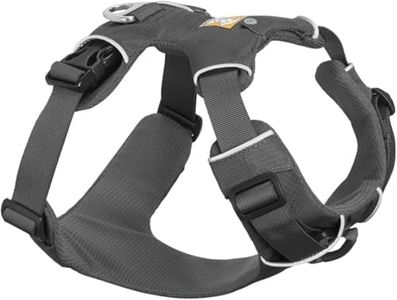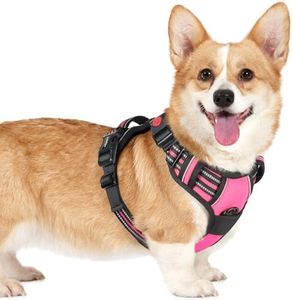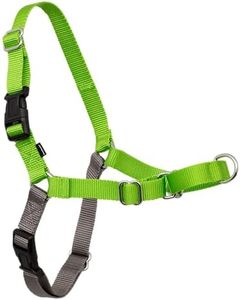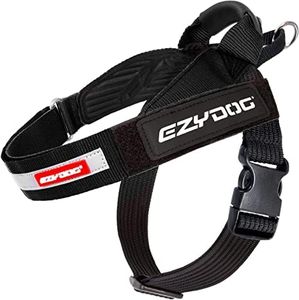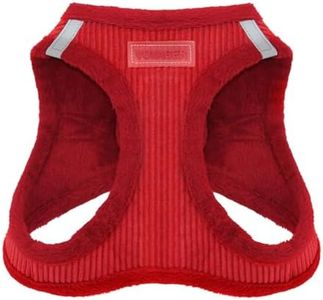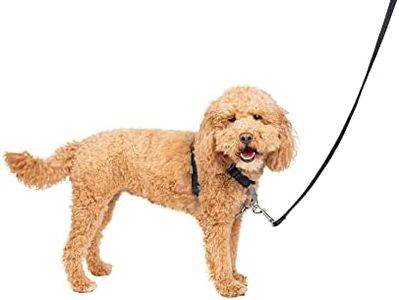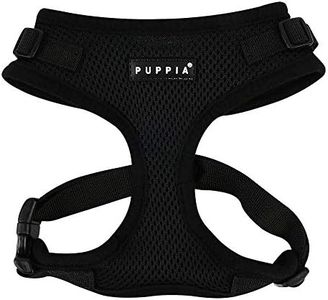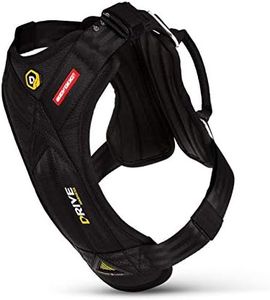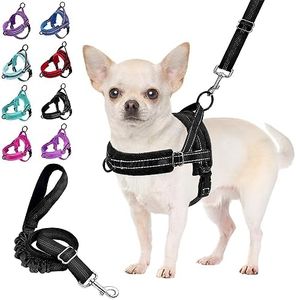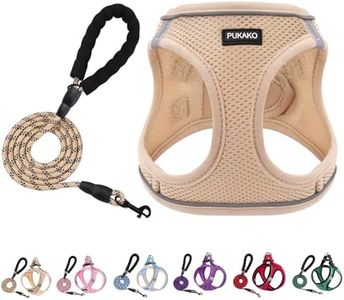We Use CookiesWe use cookies to enhance the security, performance,
functionality and for analytical and promotional activities. By continuing to browse this site you
are agreeing to our privacy policy
10 Best Small Dog Harnesses
From leading brands and best sellers available on the web.Buying Guide for the Best Small Dog Harnesses
When choosing a harness for your small dog, it’s important to focus on your dog's comfort, safety, and how easy the harness is to use. Small dog harnesses are designed to help distribute pressure away from the neck and provide you with better control during walks. The right harness should fit your dog's body snugly but not tightly, and should suit your daily activities, whether it’s quick walks around the block or more adventurous outings. Understanding the key features will ensure you pick a harness that both you and your furry friend will love.Fit and AdjustabilityFit refers to how well the harness wraps around your small dog's body, while adjustability is about how many places you can make the harness tighter or looser. This is crucial because a harness that’s too tight will be uncomfortable and could rub or pinch your dog, while one that's too loose can slip off or let your dog wiggle out, risking safety. Harnesses often come in ranges like XS, S, M, with adjustment points around the chest, neck, or tummy. The best approach is to measure your dog’s chest and neck, compare with sizing charts, and pick a harness that offers several adjustments for a custom fit. If your dog is between sizes, it’s usually safer to go for the larger and adjust down, ensuring comfort and security.
Padding and MaterialPadding refers to any soft lining inside the harness while material is what the harness is made from, such as nylon, mesh, or leather. Comfort is the most important reason to consider padding and soft materials since they prevent chafing and irritation on your small dog’s skin, especially if your pet has sensitive skin or short fur. Harnesses with breathable mesh are great for warm weather, while thicker padding is more comfortable but can get warm. Pick a harness material that is soft, light, strong, and easy to clean, and consider padding if your dog will wear it for long periods.
Type of Harness (Step-in, Vest, Overhead)Harnesses come in different types like step-in, vest, or overhead. Step-in harnesses are placed on the ground and your dog steps into them before being fastened, while vest harnesses resemble a small jacket that wraps around the dog’s chest, and overhead harnesses go over the head and then buckle around the body. Step-in and vest styles are often easiest for wriggly or nervous small dogs, while an overhead harness may be better if your dog doesn’t like things around their legs. Knowing your dog’s behavior and tolerance for handling is key in choosing a style that will make getting the harness on and off stress-free.
Leash Attachment PointThe leash attachment point is where you clip your leash onto the harness. Common places are on the back and sometimes also at the front (chest). A back attachment is typical for relaxed strolls and gives most small dogs the freedom to move naturally. A front (chest) attachment can help prevent pulling or give you more control if your small dog is excitable or learning to walk on a leash. Think about your walking style and your pet’s behavior to decide which placement suits you—some harnesses offer both options for greater flexibility.
Ease of UseEase of use means how simple it is to put the harness on and take it off your small dog, which is important if your dog is energetic or doesn’t like being handled. Some harnesses have clips, buckles, or Velcro, and the simpler the design, the less stress for both you and your pet. If you want quick and hassle-free walks, especially with a dog that’s not used to harnesses, choose a design with fewer steps and clear, secure fastenings.

